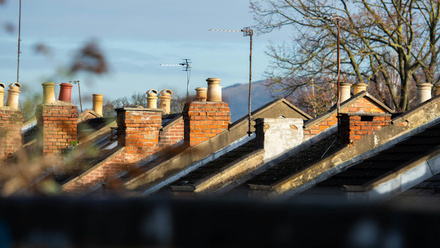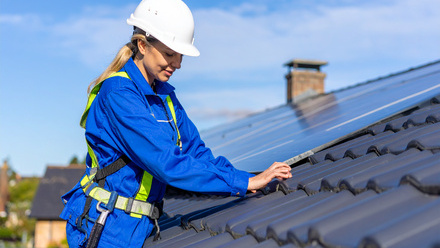UK Building Regulations - What are they?
Building regulations are a set of standards that ensure buildings are safe, energy efficient and accessible. These regulations are there to protect property owners, the public, and you as a tradesperson. Building regulations cover everything from structure safety to fire prevention, insulation, drainage and more. There are specific parts of the UK Building Regulations and the Building Safety Act 2022 that apply to roofing contractors.
Regulations Roofers Need to Know
The following parts of UK building regulations Approved Documents specifically affect roofing work. These are:
Part A - Structure Any work undertaken on a roof must make sure the building stays structurally sound. If you are adding a heavier roof covering, for example, you will need to assess the underlying structure to ensure it can support the new roof.
Part B - Fire Safety Any materials used must comply with fire safety regulations, ensuring fire resistance. Cavity barriers and fire stopping measures are of particular importance in flats and terraced housing roofs where fire can spread across properties quickly. Flat roofing installations must maintain a fire performance classification such as a Broof T4 certificate to ensure compliance to fire safety regulations.
Part C - Site Preparation and Resistance to Moisture Roofing work must protect against rain, snow and condensation. Approved document C outlines the rules for protecting buildings from weather and water damage and is relevant to managing building moisture in property.
Part F - Ventilation Roofs, especially loft conversions need proper airflow to prevent damp and mould. Part F specifies the minimum ventilation rates necessary to ensure a continuous supply of fresh air, preventing damp and mould from occuring.
Part L - Conservation of Fuel and Power If you are replacing more than 25% of the roof, insulation will probably need replacing too. Roof insulation is important because it reduces heating bills and helps to meet national energy efficiency targets by reducing carbon emissions for new and refurbished buildings by at least 31%
For more information you can download all of the Approved Documents from the Government’s Planning Portal
Do I Need to Tell Building Control?
If you’re replacing or refurbishing more than 25% of a roof, changing the roofing structure, installing solar panels or converting a loft, you need to inform local authority building control. They will come and inspect your work, sign it off and issue a Building Regulation Compliance Certificate to your client. Tip: Remember to include inspection costs and timings into your plans and estimates for these types of projects.
Can I Avoid Building Control?
If you are registered with the NFRC’s Competent Person Scheme you can self-certify some of your roof refurbishment works avoiding local authority building control inspections. CPS will then issue BRCCs directly to your client for a reduced fee (from £15 for a digital BRCC). The following types of roofing works can be self-certified through the Competent Person Scheme, where more than 50% of the entire roof covering is being refurbished:
- Slating and tiling and all other pitched works
- Felt, single-ply and GRP Fully supported metal (lead, copper, zinc and standing-seam aluminium)
- Liquid Applied Waterproofing
- Mastic Asphalt
- Reinforced Bitumen Membrane Sheeting
- Provision of roof lights - inserted between rafters or on a like-for-like basis.
Tip: Make sure you source all materials from reputable suppliers and comply with manufacturers guidelines where specified. Don’t cut corners here or your work won’t be compliant. Check your suppliers’ credentials or ask NFRC if you are unsure.
Help!
Building regulations can feel overwhelming, but you don’t have to go through it alone. NFRC and the Competent Peron Scheme teams are here to provide advice and guidance if you need it.





